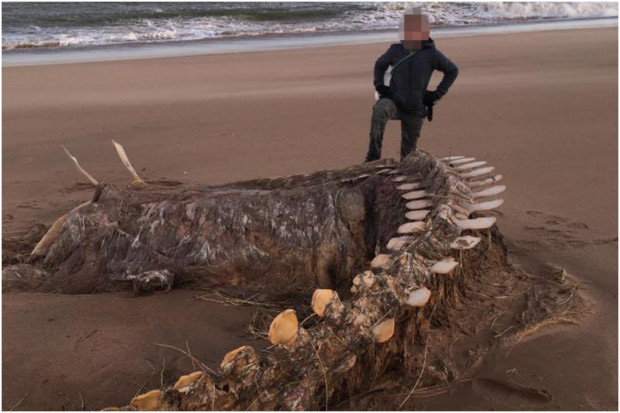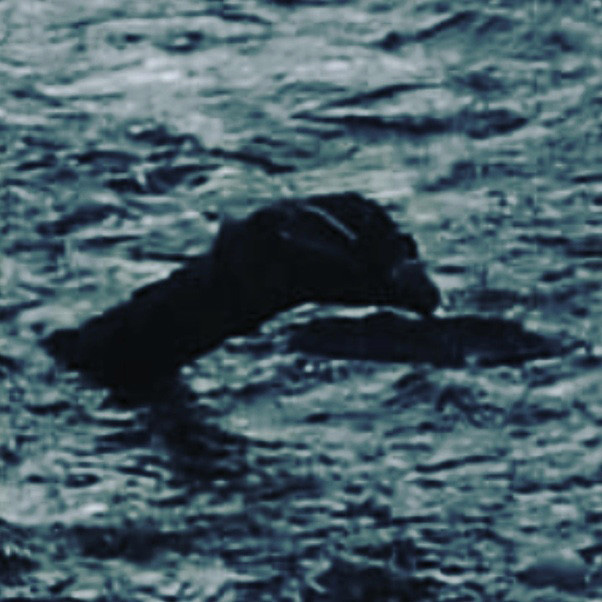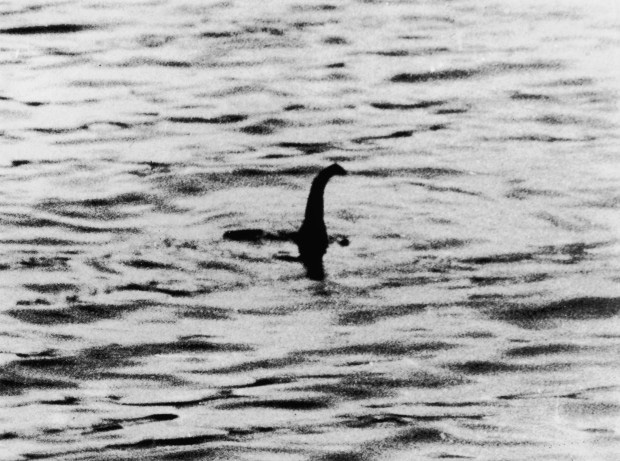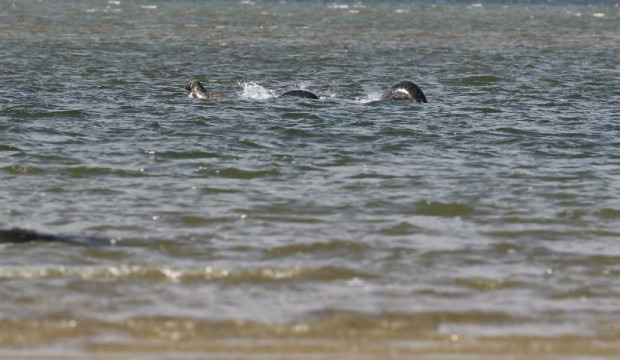This photo was shared on a Facebook forum called Fubar News in the city of Aberdeen, Scotland after storm Ciara swept across England with the caption: “Accidentally passed by this strange animal. Everyone What species do you think it is?”. In the photo is a long skeleton of unknown shape lying on the sandy shore.

This post immediately received the attention of the Scottish online community. Many people believe it is a marine animal, possibly a whale, killer whale or dolphin. Many opinions say that the skeleton belongs to Scotland’s extremely famous Loch Ness monster, but they are refuted because this animal cannot live in salt water.
This is not the first time people have doubted the existence of the Loch Ness monster. Although many people have claimed to have seen the flesh-and-blood animal swimming in the lake with their own eyes, up to now scientists have not found any evidence to prove that those rumors are true.

It is known that the Loch Ness monster was first seen in 565 by an Irish monk named Columba. He said he saw a giant water monster drag a man into the surface of Loch Ness and kill him. However, this story did not receive much attention until 1933, when many people said they saw a beast lurking above the water.

The vast majority of scientists do not believe in the existence of the Loch Ness monster and explain that it is more likely that people look at other animals such as catfish, otters… or even giraffes sleeping. walking underwater, from a long distance there was confusion and thinking it was a monster. In addition, scientists cannot rule out the possibility that the Loch Ness monster is a tree trunk, a log, or created by optical effects.
In September 2017, an amateur photographer Bremmer took a photo from the shore of Loch Ness. Looking at it, Bremmer’s friends said they saw three seals playing with each other, but another person said it could have been the Loch Ness monster.

In 2013, TV presenter Jeremy Wade made a documentary to describe the Loch Ness monster. He compared this animal to a Greenland shark with a body length of about 6 meters and usually lives in freshwater areas. However, to date, the existence of the Loch Ness monster has not been proven.





